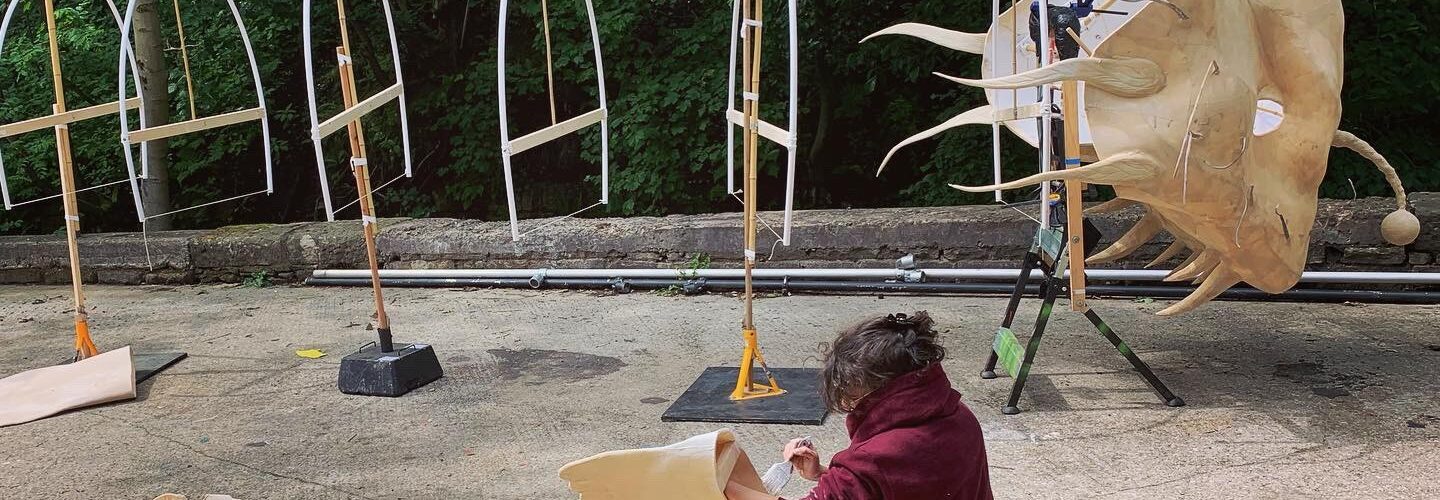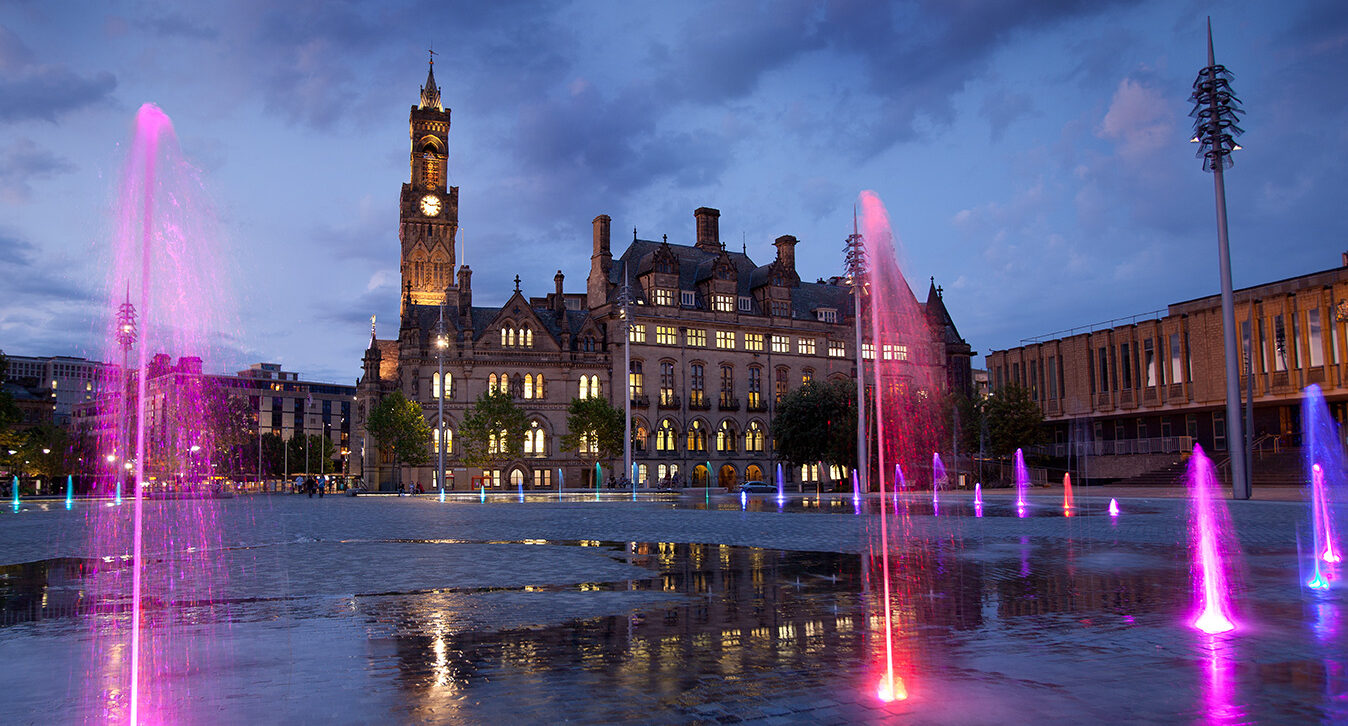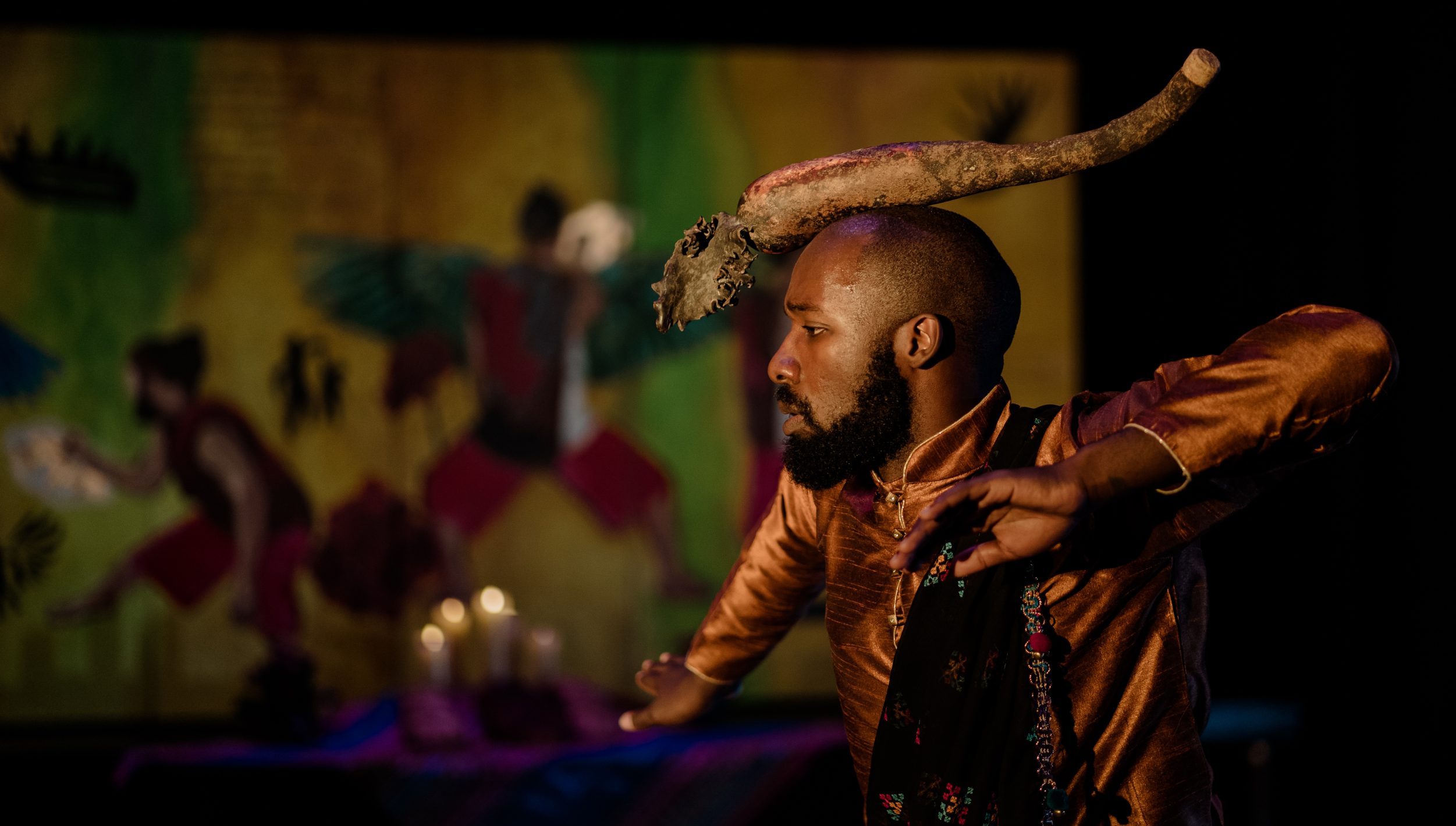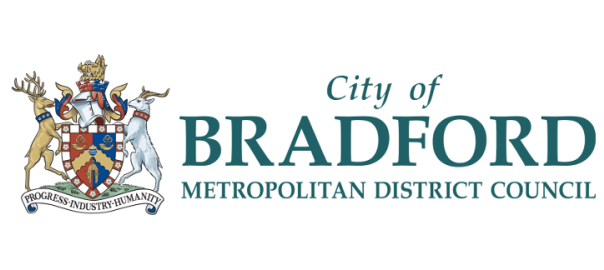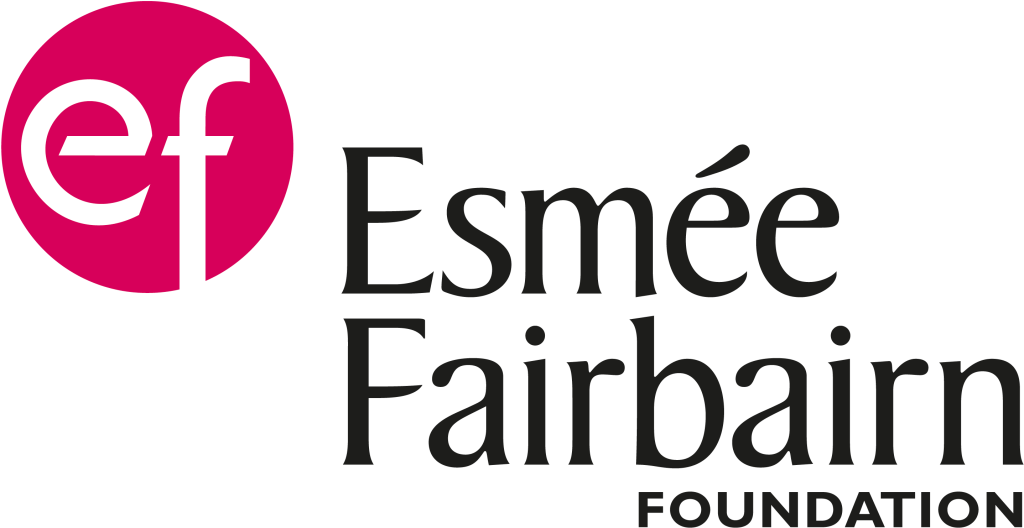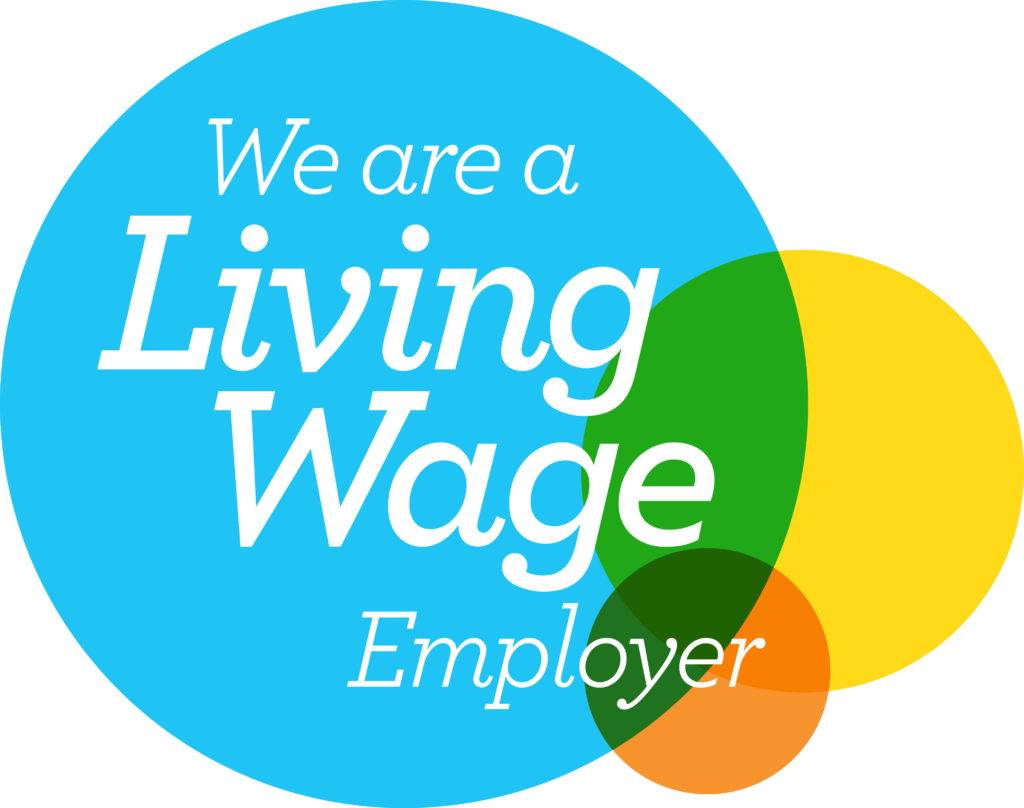1. Rehearsal Space
You need a safe, warm, dry, clean space with good ceiling height and access to power, water and a kettle for the length of time you need to rehearse. If you are working on site you still need a safe place to work in the outdoors and access to warm, dry facilities and toilets for your cast and crew.
Preferably, you need sole use of the space for the duration. Moving your set and equipment in and out and setting it up each day before you can start rehearsing eats up valuable rehearsal time. If you can leave your kit overnight, will it be safe in the space?
Is it easy to access? Can you get your vehicle close to the space to unload/reload or is the space accessed via stairs, along many indoor corridors or using a busy lift used by the public. How do you access the space when you need it? Do you get a set of keys or will someone need to let you in or out? This will affect the rigidity/flexibility of your rehearsal times.
A nearby outdoor space so you can test the work outdoors, is invaluable. The weather can drastically affect your ideas.
2. Agreement and Contracts
Venue Hire Agreement: The agreement will confirm your hours of use, cost of hire (if applicable), acceptable noise levels (e.g. are you rehearsing and making a lot of noise next door to the regular T’ai Chi class), the rules of the space (e.g. can you use tape markings on the floor, use blue tack to put things up on the wall, make or paint things in part of the space?). What are the cleaning needs for the space. The venue risk assessment from the owners of the space should tell you important information such as where the fire extinguishers and first aid kits are, who is the building first aider and how to evacuate in case of emergency.
Ensure you confirm the project for your team in writing. This can be done via a simple email or more formal contract.
Hello *Name of Performer*
I/We are pleased to confirm that you will be joining our team for rehearsals/tour of *name of show* on the following dates *date/s* and times *time/s* at *venue*. The fee for this work will be *£x*. By accepting this contract you are confirming that you will be working as a freelance artist, are registered in the UK for self-assessment tax purposes.
Please confirm by return email.
Thank you.
Example formal small scale contract for freelance artists .
Equity contracts check list
3. Weather
As you create your show, you will begin to make decisions as to what is possible in adverse weather conditions. Strive to make a show that can be performed safely outdoors whatever the weather.
4. Safety
Create a risk assessment for the rehearsal process . This ensures that you have thought about how you will keep your team safe when working for you. Example of Risk Assessment. If you are using a vacant space or unused shop, for example. You need someone who can deal with basic first aid at work and access to a standard first aid kit.
5. Schedules for Rehearsals and Production
To create a rehearsal and production schedule, work backwards from the date the work needs to be complete/previewed.
A typical rehearsal schedule:
Start Date – cast meeting/get to know you work/introductions to the material.
Devising week – Creating or adapting the material.
Production week/s – making and creating the set, props, costumes and music.
Rehearsal weeks/s – All set props and costumes should be in available to work with on the first day of rehearsal. During these weeks you ‘block’ and perfect the show and avoid making new material unless it improves the meaning or helps to link sections.
Press/promo day/s – build in time for photo shoots, making a promo video and inviting the local/industry press.
Sharing/Preview date/s – (at least 1 week before first tour date). A preview/sharing to invited audiences preferably in the outdoors. It is also possible to hold a preview in an outdoor public space (with relevant permissions – a music licence or temporary event notice (TEN) may be needed from the local authority if you are using public space for your preview. This needs to be submitted 6 weeks in advance and costs £21.
Post production rehearsal date/s – this enables you to test and adjust the show as a result of the preview, gives you a final pre-tour rehearsal, allows time for fixing and repairs to equipment that may need adjusting after first use and time to ensure the show is packed well for transit.
6. Audience – Defining the Performance Space, Attracting and Maintaining an Audience for Static Shows
Defining: For crowd gathering static shows in the outdoors, traditional theatrical audience configurations can be used and adapted.
End on – where the performance takes place at one end of the public space – against a wall, hedge or other barrier with the audience opposite facing the action. This is mostly used for larger scale events – e.g. aerial shows against a building.
Three sides – this is a popular format for static outdoor shows. There is a ‘back’ to the show and the audience are arranged on the three remaining sides. This is great for small and medium scale as it allows for maximum audience in close proximity to the action.
Traverse – where the action takes place in a linear fashion with the audience either side of the action facing each other.
In the round – the action is centred in the middle with the audience surrounding it on all sides.
Regardless of the audience configuration chosen for the show, careful consideration needs to be given to:
• Ensuring that your performance space is defined and maintained to give you sufficient room to perform and prevent the audience from encroaching on it or passing through it. This is essential for both the aesthetics of the production and the safety of your performers and audience.
• Where props and hand held items can be stored in view of actors and out of audience reach when not in use.
• How you organise your audience around your performance space. You need to consider accessibility for small children, wheelchairs, prams and control how people sit or stand to view the performance for the best viewing experience for all members of your audience and best performance experience for your actors.
Attracting: If you are performing at a festival with a timetabled programme, it is likely that a some people may gather in time for the start of your show, but it is useful to build “crowd attracting” material into your show such as:
• Signature music.
• Audience cheers and applause for the key characters or a preliminary action.
• Sending some actors out of the performance space to “drum up” or “bark up” the audience.
Maintaining: However experienced, creators of outdoor work will work hard to make sure the show retains the audience’s focus throughout, despite the distractions of passing traffic, passing people, music and sound “bleed” from shops, shows or generators, weather or access to the space by the emergency services.
7. Technical Production
Set, props and costumes need to be appropriate for the outdoors. They need to be waterproof and wind resistant. Any outdoor set must be secured firmly to avoid collapse in high wind, risk of damage and injury to performers/audience. Layered costumes are useful to maintain the aesthetic whilst giving performers the flexibility to adjust the layers to suit the varying weather. All set, props, costumes and music should be in good working order for the first day of rehearsals. Final paint finishes and aesthetic touches can be added during and after rehearsals.
A music licence is required for pre-recorded music and royalties will be due to the creator/s of the music and arranged at least 30 days in advance of use/performance.
See example tour pack – Highly Sprung Performance.
8. Marketing Materials
Sometimes a show needs to be marketed before it is made and thinking around promotion and marketing will have already informed your funding applications.
Ensure you build time into your rehearsal/production schedule for photo shoots, to record video material, trailers and invite the press.
Use your website & social media to blog about your creation progress regularly.
Arts Council England guidance on marketing a touring indoor theatre work
Further information:
Top 10 tips from producer, Phil Hargreaves.

